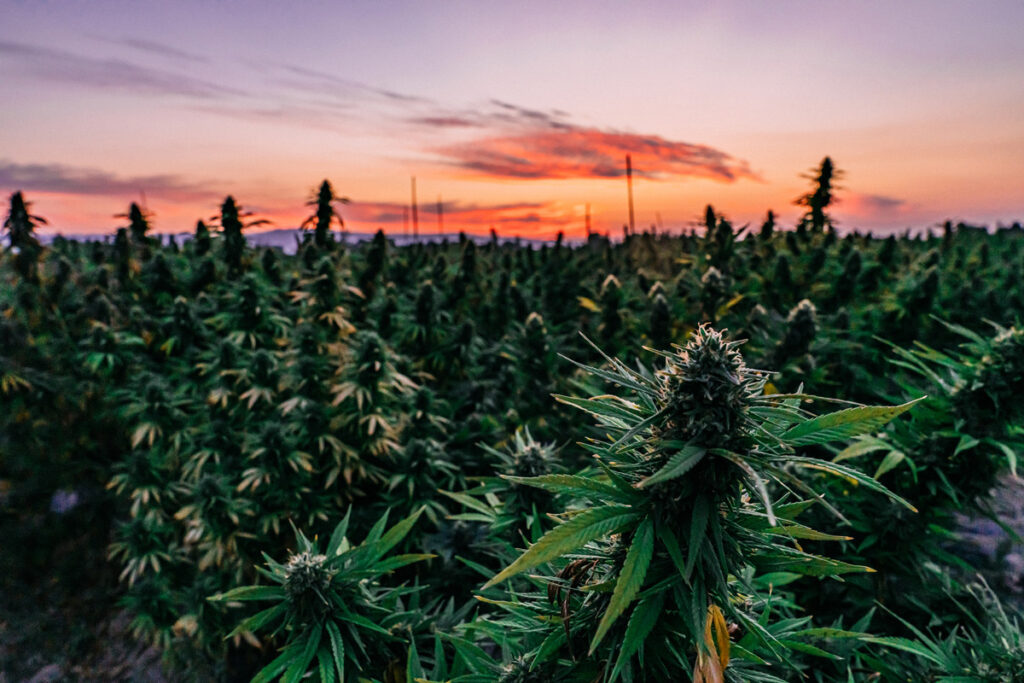
AS EXTREME weather intensifies due to climate change, it’s important that cannabis cultivators have proper insurance in place to cover any damages. Whether you’re cultivating in California’s Emerald Triangle, the mountains of Vermont or the plains of Oklahoma, cannabis operations are susceptible to the same types of natural perils as mainstream crops, including wildfires, floods, hail and unexpected freezes. Recent incidents underscore this reality:
• A cannabis farm in Colorado lost 20,000 plants to an unseasonable October snowstorm.
• Wildfires and smoke exposure in California between 2020 and 2021 resulted in an estimated $2.4 billion in damages to cannabis cultivators.
These events highlight the vulnerability of cannabis crops and the necessity for robust insurance coverage.
Even parts of the country that may not be exposed to natural catastrophes are still seeing substantial changes in average temperature and humidity. This could affect commercial cannabis cultivation and force growers to make difficult decisions, like growing outdoors rather than indoors or which cannabis strains to grow.
Even for mainstream farmers, insuring crops is getting more expensive as climate volatility drives higher losses and tighter underwriting. But for cannabis growers, who already deal with unique regulatory and financial barriers, finding reliable insurance coverage is even more complicated.
Securing proper coverage
Most states require cannabis businesses to carry insurance as part of their licensing conditions. Admitted insurers are licensed by the state to sell insurance and will usually have standardized policies that include the same coverage language and exclusions for all clients.
But because most admitted carriers won’t cover cannabis operations, growers instead have to go to the non-admitted market, which consists of insurers that are not licensed in the state you are in. However, they are not fly-by-night operations and are often backed by solid insurance entities like Lloyd’s of London.
The good news about these policies is that underwriting can be bespoke, but it may take longer. These insurers may also insist on a number of coverage exclusions and require higher deductibles for certain events.
What cannabis cultivators need to do now
The biggest risk to your operations is having inadequate insurance in place that may not cover all of your losses. Many growers don’t realize how underinsured they are until it’s time to file a claim — and by then, it’s too late.
Some coverage gaps you’ll want to pay close attention to:
• Smoke or ash damage exclusions
• Mold or mildew caused by humidity
• Weather events not listed in the policy
• Outdoor crop losses not covered due to “uninsurable peril”
As your insurance broker, Cannabis Connect can help by:
• Walking you through the exclusions section.
• Detailing what documentation you need if you have to file a claim.
• Explaining the appeal process if a claim gets denied.
Looking ahead: what might change
There are glimmers of hope. The USDA’s 2021 move to expand crop insurance for hemp producers could provide a model for future cannabis coverage. And as more states come online — like Nebraska, which legalized medical cannabis in 2024 — the demand for insurance products tailored to cannabis is likely to grow.
But until broader reforms come, cannabis cultivators must be vigilant. We can help you review your policies regularly to ensure you have adequate protection against climate change, natural disasters and other liabilities you may face.
